We determine the hierarchy of college basketball each season through the chaos of the NCAA tournament. But regional bragging rights matter, too.
The following is a list of the best college basketball jobs by state. And don't be surprised if the most prestigious or popular program in your area fails to earn a slot. We've considered success relative to expectations, fan fervor, salary, job security, facilities, tradition, institutional support, staying power and recent level of drama. (That's why we can't call a school such as North Carolina, facing a potential bulldozer from the NCAA following an academic investigation, the best job in its state.)
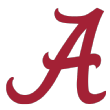
Alabama: Alabama Crimson Tide
How did Avery Johnson, who makes $2.8 million per year, sign a recruiting class ranked eighth by ESPN.com? The multimillion-dollar practice facility attached to Coleman Coliseum, the site of the nation's second-highest year-to-year attendance increase in 2015-16 (2,934), probably helped.

Alaska: Alaska-Anchorage Seawolves
No Division I team in Alaska. But Rusty Osborne coaches a Division II standout that also hosts the Great Alaska Shootout each season, offering his roster an annual chance to topple Division I squads.
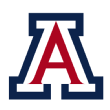
Arizona: Arizona Wildcats
The school's president, Dr. Robert Robbins, told the Arizona Republic last week that Ohio State would have a shot at Sean Miller only "over my dead body." The program's legacy, dominance in the West Coast recruiting wars, passionate fans, weather and a $2.9 million salary should keep Miller in town for a long time.

Arkansas: Arkansas Razorbacks
Bud Walton Arena boasts an impressive museum erected to honor the 1994 men's basketball championship. The venue also holds more than 19,000 people. Mike Anderson ($2.2 million per year) has a good job. The whole state loves Razorbacks basketball.

California: San Diego State Aztecs
It's in San Diego. And Steve Fisher's former program filled Viejas Arena with the wildest fans on the West Coast to support this rags-to-riches program. He didn't make UCLA money ($926,000 per year), but he also avoided controversial banners calling for his firing, lukewarm attendance and conversations with LaVar Ball.

Colorado: Colorado Buffaloes
Tad Boyle leads the state's only Power 5 program, and he makes $1.5 million per year to coach a squad often in the hunt for NCAA tournament invitations -- but he doesn't face demands for a trip to the Final Four.

Connecticut: UConn Huskies
Kevin Ollie might have preferred the gigs at nearby Quinnipiac or Hartford after last season's 16-17 finish. But he's still making $2.8 million to coach a program with four national championships and a longstanding allure for elite recruits.

Delaware: Delaware Blue Hens
Martin Ingelsby's squad struggled last season (13-20), but the recently announced cost of attendance stipend ($1,500) Delaware will give to players this season will help the second-year coach build the program.

Florida: Florida Gators
He'll never escape the shadow of the school's football monster, but Michael White ($2 million) coaches a program with strong support at the O'Connell Center, great facilities and a pedigree unmatched by his rivals at Florida State and Miami.
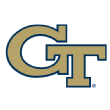
Georgia: Georgia Tech Yellow Jackets
Josh Pastner ($1.6 million), the reigning ACC Coach of the Year, possesses the energy to rebuild a Georgia Tech program blessed with access to the region's coveted recruits and an attractive location (Atlanta) on a campus that has produced nine first-round NBA draft picks since 1999.

Hawaii: Hawaii Rainbow Warriors
Eran Ganot will make $285,000 next season to coach basketball in Hawaii, which reached the NCAA tournament in 2015-16. Not a bad life.

Idaho: Idaho Vandals
Head coach Don Verlin's school is raising cash for the forthcoming $30 million Idaho Arena project. His rivals at Idaho State suspended a game last season because of a leaking roof. He wins.
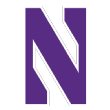
Illinois: Northwestern Wildcats
Chris Collins, who led Northwestern to its first NCAA tournament appearance last season, will have a new Welsh-Ryan Arena after a $110 million renovation is completed for the 2018-19 season. He's a hero -- forever -- at a Big Ten school without the misguided "you have to get the best Chicago kids" pressure facing Brad Underwood at Illinois.

Indiana: Indiana Hoosiers
Two years ago, Indiana finished seventh in attendance among Division I schools following a 27-win season. That's not why Archie Miller has the state's best job. This is: In 2010-11, Indiana finished 12th in attendance (average of 15,529) after a 12-20 campaign. Bob Knight's shadow continues to fade. The tradition, facilities and support will all merge to help Miller elevate the Hoosiers again.
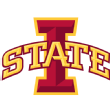
Iowa: Iowa State Cyclones
Steve Prohm has the state's most devoted fans, a crippling atmosphere at Hilton Coliseum (Hilton Magic), a supportive administration (the school gave Prohm a $450,000 raise in March) and boosters willing to write a check to enhance the squad.
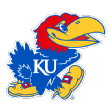
Kansas: Kansas Jayhawks
Bill Self's pitch to recruits? Come play for a program with 13 consecutive Big 12 titles and a barbershop in the team's dormitory. He's also the king of the state with a $5 million annual salary.
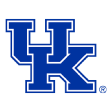
Kentucky: Kentucky Wildcats
As he chases a generation of prep stars yearning for adoration on the recruiting circuit, John Calipari ($7.75 million) enjoys the assistance of a campus, community and city all willing to go all-in to keep UK's revolving talent pool rich and fruitful.

Louisiana: LSU Tigers
They couldn't fill the seats with Ben Simmons leading the way. But at least new coach Will Wade knows he runs the only program in the state that had a chance to sign the nation's top recruit two years ago.

Maine: Maine Black Bears
It's the state's only Division I program, one led by Bob Walsh. That's the only way a program that won seven games last season makes this list: no competition.
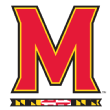
Maryland: Maryland Terrapins
Mark Turgeon ($2.56 million) can walk to one of the hottest recruiting markets in the country in the Washington metro area. And the Xfinity Center hosted nearly 18,000 fans each game (fifth in attendance) in 2015-16.

Massachusetts: Harvard Crimson
Wendell Carter, ranked fourth in the 2017 class by ESPN.com, considered Harvard before he signed with Duke. That's a positive sign for Tommy Amaker, who signed three top-100 recruits in his 2016 class.

Michigan: Michigan State Spartans
The vibe in East Lansing before a big Michigan State game entails everything a college basketball fan deserves, and the Breslin Center is rowdy. Tom Izzo has built a franchise. That's why projected first-round pick Miles Bridges decided to stay for another year.
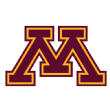
Minnesota: Minnesota Golden Gophers
Yes, it's the only Division I team in the state. But Richard Pitino's rising program (a new practice facility opens in 2018) plays in one of the Big Ten's largest cities and one of its most nostalgic venues (Williams Arena).

Mississippi: Ole Miss Rebels
Andy Kennedy's superiors let him create spoof videos and pay him $1.9 million to coach a team in the $100 million Pavilion, which opened in 2014.
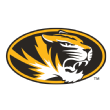
Missouri: Missouri Tigers
Cuonzo Martin comes to a Missouri program that has invested millions into the ongoing upgrade of Mizzou Arena, one of the top facilities in the country. The school is betting $21 million over seven years Martin can reinvigorate a fan base that once made Mizzou Arena a dangerous place for opposing teams.

Montana: Montana Grizzlies
The school loves coach Travis Decuire so much, it gave him a 12 percent raise and a three-year extension in 2016.
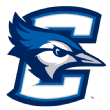
Nebraska: Creighton Bluejays
Ohio State offered Greg McDermott an opportunity to move to the Big Ten, but Creighton's head coach said no. He couldn't leave CenturyLink Center, the energized Jesuit school's home that sells beer and finished in the top-10 in attendance in 2015-16.
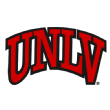
Nevada: UNLV Runnin' Rebels
Marvin Menzies endured a turbulent debut last season when UNLV won just 11 games. But recruit Brandon McCoy (ranked 15th by ESPN.com in 2017) anchors a top-30 class, proof UNLV is still relevant.

New Hampshire: New Hampshire Wildcats
Bill Herrion makes $150,000-plus after leading New Hampshire to consecutive 20-win seasons. Prior to that run, however, he'd won fewer than 10 games in two of the three previous years. But the school gave him a chance to improve.

New Jersey: Monmouth Hawks
Nothing against Seton Hall, but King Rice -- who signed a five-year extension last season -- seems positioned to coach Monmouth for life if he desires. The job security gives him the edge over Kevin Willard, who faced criticism two years ago before his team's recent turnaround.
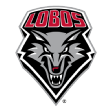
New Mexico: New Mexico Lobos
Paul Weir left New Mexico State to join a team that fired its former head coach after just one NCAA tournament appearance in four seasons and lost its athletic director in a spending scandal. But his new team is the most popular and successful program in the state.

New York: Syracuse Orange
Give Jim Boeheim, who makes $2.1 million per year, credit for turning Syracuse into a gig a multitude of coaches will pursue when he retires -- if he ever retires. The next coach will inherit one of college basketball's most valuable brands.

North Carolina: Duke Blue Devils
Mike Krzyzewski's mastery of the one-and-done recruiting pool allowed Duke to maintain its place as one of the strongest college basketball programs in the country. He's arguably the most powerful man in college basketball with the resources, reputation and support to compete for national titles until the day he retires. And he's not dealing with an academic scandal that could damage his program.

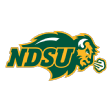
North Dakota: North Dakota State Bison
Coach David Richman has access to the new $50 million Sanford Health Athletic Complex, which opened last year. It's a gem few programs outside the Power 5 can match.

Ohio: Ohio State Buckeyes
Yes, Chris Holtmann will endure grand expectations from an administration and fan base awaiting a return to the best years Thad Matta once delivered. But the $167 million athletic budget, his $3 million annual salary and a great environment at Value City Arena should all fuel Holtmann's rise at his new school.

Oklahoma: Oklahoma Sooners
Buddy Hield's senior season showcased the full potential of Oklahoma basketball and helped Lon Kruger secure a $3 million salary in 2016-17, the year after Hield turned pro. Kruger is still competing for elite recruits and dazzling a fan base that loves football but also backs Kruger's squad.

Oregon: Oregon Ducks
Dana Altman must replace his best players from last season's Final Four team. That's not fun. But knowing he could ask Nike founder and booster Phil Knight for gold toothbrushes if he needed them in the team's state-of-the-art locker room is comforting.

Pennsylvania: Villanova Wildcats
Jay Wright coaches the best college program in the best basketball city in America. And he makes $2.5 million each season, enough for a few customized suits. He's living well right now, especially after winning the national title in 2016.

Rhode Island: Providence Friars
Ed Cooley ($2 million) coaches in the Big East, arguably the nation's pound-for-pound conference king, and his opponents hate to play his squad at the Dunkin' Donuts Center. He makes nearly $1 million more per year than Rhode Island's Danny Hurley.
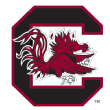
South Carolina: South Carolina Gamecocks
Frank Martin makes $2.45 million per season. After last year's Final Four run, however, that number will rise -- along with ticket prices at Colonial Life Arena.

South Dakota: South Dakota State Jackrabbits
T.J. Otzelberger's program reached the NCAA tournament for the second consecutive season in 2016-17, extending the success of this Summit League power.

Tennessee: Memphis Tigers
The backlash that followed the recent exodus of top players from Tubby Smith's roster demonstrated the passion within a fan base that expects its Tigers to compete with the nation's elite teams. Plus, a $20 million practice facility will open soon. It's a great job in a city obsessed with basketball and desperate for success.

Texas: Texas Longhorns
Although Shaka Smart missed expectations last season, he makes $3 million per year, and the UT name helps him pursue five-star talent each season. Just ask Mohamed Bamba, part of a top-10 recruiting class Smart assembled for 2017-18.

Utah: BYU Cougars
The Marriott Center in Provo is widely recognized as one of the nation's toughest venues for opponents. Dave Rose, who recently signed a five-year extension, fields competitive teams with 11 NCAA tournament appearances since 2000.

Vermont: Vermont Catamounts
The only Division I school in Vermont. But John Becker's team won 21 consecutive games before losing to Purdue in the opening round of the NCAA tournament last season.

Virginia: Virginia Cavaliers
It's a school that competes with the personnel that has challenged Duke and North Carolina in recent years for the ACC title. Tony Bennett has signed five top-100 prospects in the past three years to a program that finished within the top 20 in attendance in 2015-16.

Washington: Gonzaga Bulldogs
Mark Few has had chances to leave Gonzaga. But why would he? He makes $1.6 million per season, he signs talented transfers and incoming recruits every year and the school will never fire him. This is one of the best gigs in America.

West Virginia: West Virginia Mountaineers
Not much competition. But you could make a case Bob Huggins, who makes $3.6 million per year, possesses the best gig in the Big 12 outside of Austin and Lawrence.

Wisconsin: Wisconsin Badgers
Madison is a great college sports town. The Kohl Center is a top-tier facility with a fan base that generates a suffocating atmosphere for Big Ten opponents. And some of the Midwest's top recruiting pools are an easy drive from campus for Greg Gard ($1.75 million) and the kids he recruits.

Wyoming: Wyoming Cowboys
Allen Edwards makes nearly $500,000 to coach at Wyoming, the state's only Division I school. Seventeen coaches who made the NCAA tournament last season made less than Edwards.
